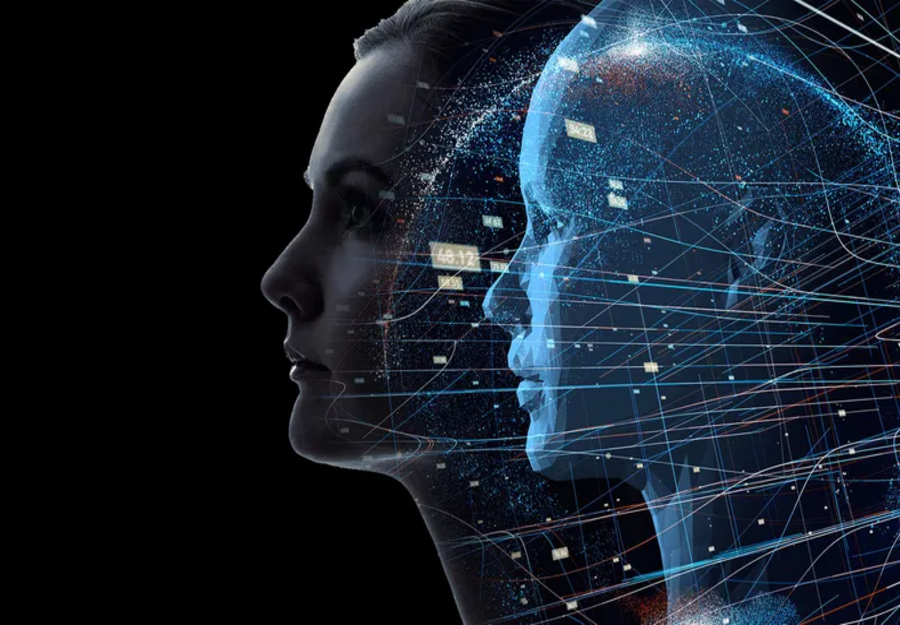Digital Twin
A digital twin is a virtual representation of a system or object that follows its lifecycle, is updated based on real-time data, and aids in decision-making through reasoning, simulation, and machine learning.
It is composed of the following three elements: a physical entity in real space, the digital twin in software form, and data that links the first two elements together.
https://www.ibm.com/topics/what-is-a-digital-twin
https://www.twi-global.com/technical-knowledge/faqs/what-is-digital-twin
Digital twins can be categorized in a number of ways, but the four that follow—arranged in a hierarchy—are by far the most widely used:
- Component twins: The most fundamental level; it is used for mechanical subassemblies rather than small components like screws.
- Asset twins: The digital twin depicts the interplay between two or more components.
- System twins: Assets put together to form a full-fledged, operational unit.
- Process twins: Systems collaborating to achieve a greater purpose.
https://aws.amazon.com/what-is/digital-twin/
https://www.techtarget.com/searcherp/definition/digital-twin
Digital Twin in the Healthcare Sector
Digital twins are built using complex computer models and can help to make clinical decisions based on a patient’s health. It gives researchers essential information for future research pathway development, therapy effect modeling, and disease pattern identification.
As simulation is playing an increasingly important role in medicine, providing the individual patient with a customized diagnosis and treatment is envisaged as part of future precision medicine. Such customization will become possible through the emergence of digital twin (DT) technology.
Source: https://www.ncbi.nlm.nih.gov/pmc/articles/PMC9830576/
https://www.siemens-healthineers.com/perspectives/digital-patient-twin
The digital twin is used in healthcare in the following ways:
- A simple illustration of a complex concept
- The chance to detect and comprehend previously hidden relationships
- Support right away for treating immune-dependent illnesses such as cancer, autoimmune diseases, and organ transplants
- Faster and less expensive drug discovery
- A path to medications with less negative side effects
- Towards personalized medicine
Applications in Healthcare
Diagnosis and treatment decision support: Diagnoses will be aided by the patient’s digital twin feed from several health data sources, including imaging records, in-person measurements, test results, and genetic information. The patient model will replicate the patient’s health status as determined by the clinical data that are currently available and extrapolate the missing parameters using statistical models.
Patient monitoring – wearables: The compact and comfortable wearables (sensors) are used to supply cloud-based digital twins with real-time data. The system can be made to recognize symptoms at an early stage by developing models that take into account how diseases advance, and by continuously collecting patient data using fitness trackers. (biometric, behavioral, emotional, cognitive, psychosocial, etc.). This will allow doctors and users to diagnose the patient before becoming ill.
Surgery simulation – surgery risk assessment: Before choosing a course of treatment, digital twins will be able to simulate an invasive clinical procedure and anticipate the results. From choosing a medical instrument (location, orientation, dimension, etc.) to choosing a surgical variable (magnitude, angle, form, etc.).
Medical device design and optimization: The medical device is designed based on the digital twin of the patient, who has the unique characteristics of the patient, and the digital twin of the medical equipment. It helps to correlate both models when a certain device is implanted into a particular patient. This is the situation with groups that cannot be clinically explored without risk, including patients with uncommon disorders. The digital twins are particularly helpful for optimization activities like increasing a device’s performance by performing countless simulations with various scenarios and patients. Additionally, the development of 3D printing technology and patient digital twins may enable the customization of medical equipment by creating unique designs for each patient
Drug development and dosage optimization: A digital twin can be treated computationally with thousands of different medications in order to find the optimal one or medications for that particular condition. However, this need not end with currently available medications. It also tests new prospective medications to determine which has the best chance of effectiveness and the ideal dosage by building a digital cohort of real patients with various phenotypes who share symptoms.
https://www.botreetechnologies.com/blog/most-popular-healthcare-applications-examples/
The Technology involved
Two complementary groups of technologies can be used to summarise digital twins. The induction approach, statistical models that are learned from data, and the deduction approach, mechanistic models that integrate multiscale knowledge and data
Statistical methods and Artificial Intelligence: The mathematical techniques used to infer associations from machine learning techniques. The use of statistical models is inductive. They enable the extraction and ideal blending of unique biomarkers using mathematical formulas. They are sometimes referred to as “black boxes” as a result. The application of these techniques for patient monitoring, diagnosis, and treatment decision support is becoming prevalent.
Mechanistic Modelling: Mechanistic models use inductive reasoning. They offer a framework for combining and enhancing experimental and clinical data, identifying mechanisms, and forecasting results—even in the face of unforeseen circumstances.
Other technologies – Medical imaging and Wearables: Digital twins in healthcare will be greatly impacted by developments in wearable technology and medical imaging. Medical imaging technologies are one of the key inputs for mechanistic models since they help to capture the patient’s condition as well as its anatomy and physiology. To collect real-time patient data for patient monitoring and building statistical models, wearables will be essential.
The digital twins have been expanded to new areas of digital care as given below :
- Medical Device Development
- Disease Modelling
- Digital Therapeutics and Virtual Reality-based Therapies
- Advanced Understanding of the Human Body
- Hospital Operations
Health digital twins are defined as virtual representations (“digital twin”) of patients (“physical twin”) that are generated from multimodal patient data, population data, and real-time updates on patient and environmental variables. With appropriate use, HDTs can model random perturbations on the digital twin to gain insight into the expected behavior of the physical twin—offering groundbreaking applications in precision medicine, clinical trials, and public health. Source: https://www.nature.com/articles/s41746-022-00694-7
Featured Image Source: https://www.networkworld.com/article/3280225/what-is-digital-twin-technology-and-why-it-matters.html

